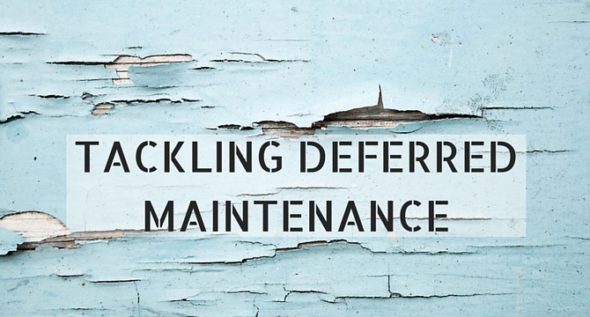It’s unfortunately too common today to find buildings at colleges and universities across the country that are showing their age. After all, updates bring costs, and facilities management is competing for funding against multiple other departments. Many institutions opt to put off investments in necessary upkeep—much less long-overdue renovations—in order to put funds toward faculty compensation or other school resources.
However, maintenance cannot be deferred forever. Ultimately, these institutions may face more significant maintenance costs in the future as a result of having postponed necessary upkeep.
It’s up to facilities managers to demonstrate this critical need for funding, a challenge to be sure. To best communicate this need, it helps to understand the true cost of deferred maintenance. With context as to how this backlog can affect the institution’s overall mission and goals, FMs can better communicate funding needs to financial decision-makers.
Striking a Balance Among the Competitive “Three Fs”
Higher education institutions must balance spending among the “three Fs”: faculty compensation, financial aid, and facilities. Each of these areas require regular investments, but it’s often all too easy to push spending for facilities maintenance to the bottom of the list.
Each of these areas are ubiquitous expenditures that every educational institution must address. However, faculty compensation and financial aid have the benefit of being on the forefront as a driving force that directly impacts enrollment. And today’s enrollment trends are only increasing competition among campuses.
Among other challenges, an overall lower number of high school graduates is leading to lower college and university enrollments in most parts of the U.S. and Canada. As a result, some campuses hoping to attract the best and brightest have grown space faster than they can fill it, and now are left with more maintenance and less funding.
Meanwhile in some states, such as Texas and Utah, institutions are facing unprecedented numbers of new enrollments, many of them first generation enrollees in higher education institutions. These institutions must make the case for new capital funding in order to lessen overcrowding.
Smaller institutions have even tougher funding challenges. Colleges that serve 1,000 students feel pressure to provide amenities similar to universities with more than 10,000 students in order to attract their share of bright students and leading faculty. These smaller institutions typically have higher tuition discounting and rely on funding from a smaller alumni donor base, exacerbating this funding challenge.
No matter the size of the school, the battle for funding makes it difficult for FMs to make valuable improvements and perform necessary preventive maintenance. But this only furthers the problem of aging infrastructure.

Why Campus Leaders Can’t Ignore Deferred Maintenance
Virtually every higher education institution has its share of deferred maintenance. Some are far worse than others. But when FMs aren’t able to provide preventive maintenance or secure needed upgrades to MEP systems, roofing, or plumbing, for example, they’re only worsening the problem. Ultimately these maintenance delays will lead to a problem that can’t be postponed, and will be much more expensive to fix.
It’s important to recognize that ignoring preventive maintenance can lead to more frequent, and expensive, emergency repairs. It can also dramatically decrease the overall lifespan of critical systems. In addition, the visible decay can adversely impact student and faculty recruitment and retention. Put in these terms, it’s easy to recognize that deferred maintenance leads to much higher costs than regularly scheduled preventive maintenance.
Today’s FMs face tough competition in securing the funding needed to address deferred maintenance securing the funding needed to address deferred maintenance. Solid metrics and open communication provide a good foundation to assist these professionals in clearly expressing funding needs.
By prioritizing projects and establishing a clear path for improvements, FMs can not only present the problem but clearly communicate a solution to key financial decision-makers.
The Reason to Act Now
It’s understandable that many higher education institutions have had to defer maintenance on critical systems and buildings. Even today, many have not fully recovered from the economic downturn of 2007–09, and thus remain in a pattern of protection. However, maintenance backlogs continue to grow even when available funding does not. Institutions can only postpone addressing these problems for so long. When FMs are able to better communicate the challenges they face, and the available solutions, they’ll be more successful in securing the capital necessary to put those solutions in place.
About the author:

Jay Pearlman has been with Sightlines since its inception in 2000. He has played a variety of roles across the company, including those in operations, business development, quality control, and product development.

Posted by
Join us at HEFF!
An interactive retreat for facilities leaders at the nation's top colleges and universities.
Nov 8-10, 2026 | San Antonio, TX
Learn More









Comments